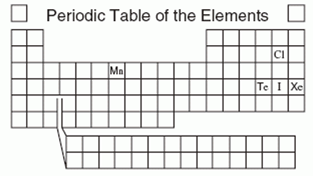Atomic masses generally increase from left to right and top to bottom in the periodic table of elements. This is because as you move from left to right across a period, the number of protons in the nucleus increases, resulting in a greater positive charge and stronger attraction for electrons. This increased attraction leads to a smaller atomic radius and higher atomic mass. Similarly, as you move down a group, the number of energy levels or shells increases, causing the atomic radius to increase and atomic mass to increase as well.
















